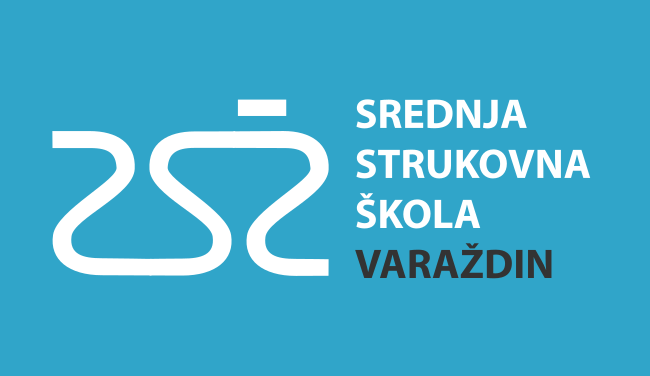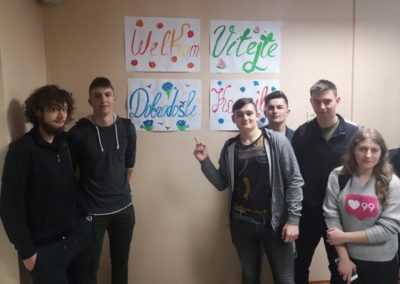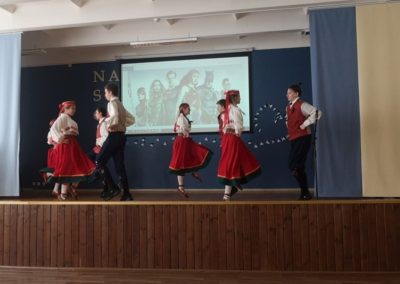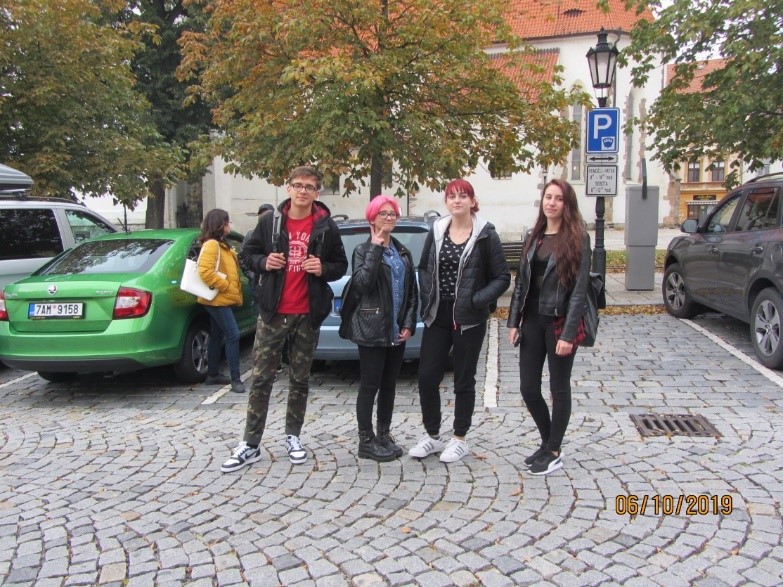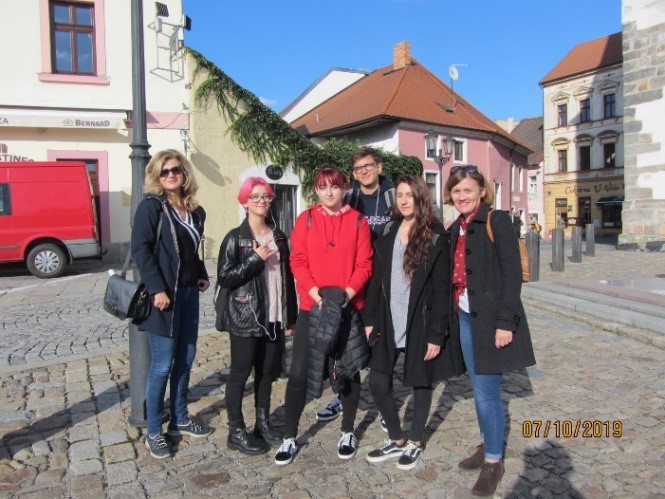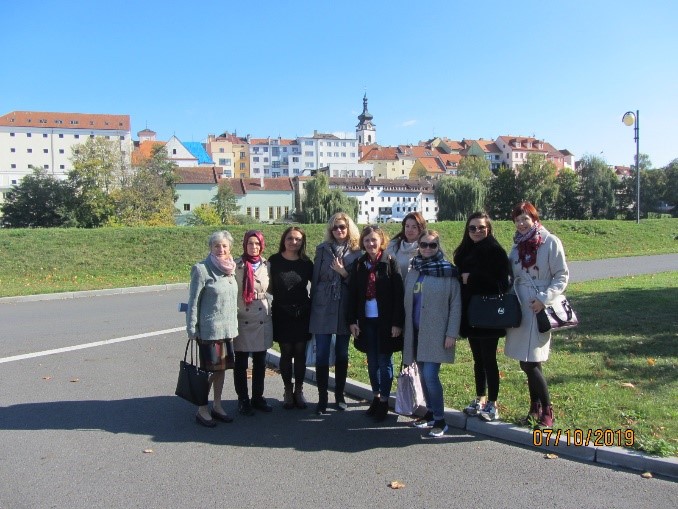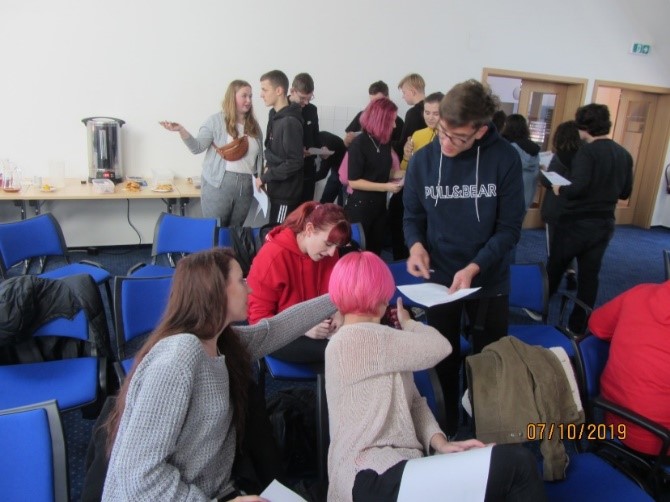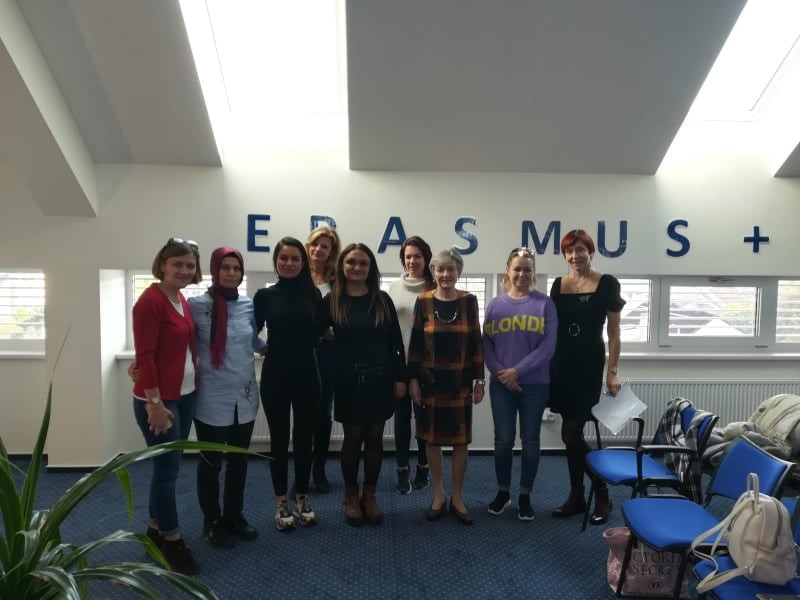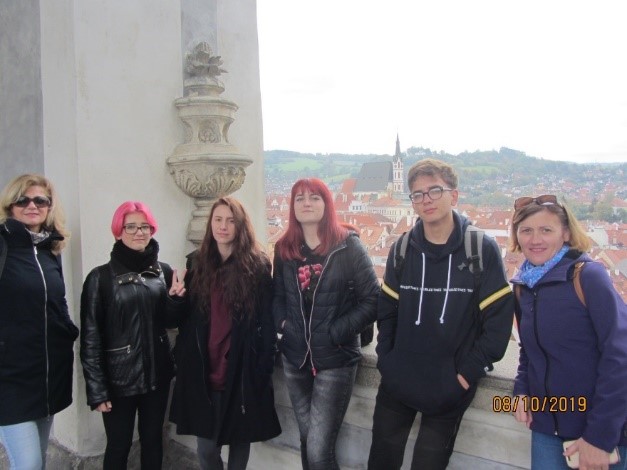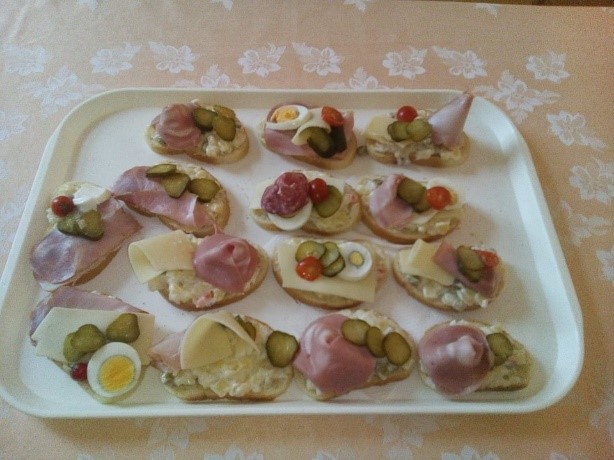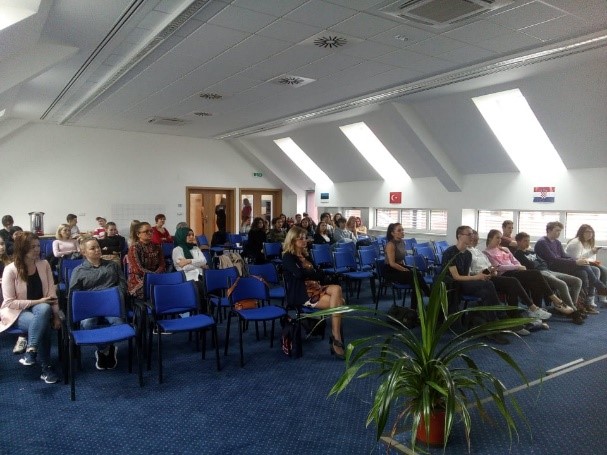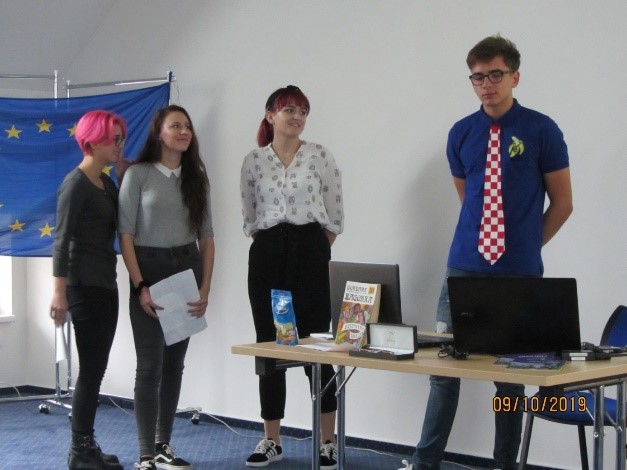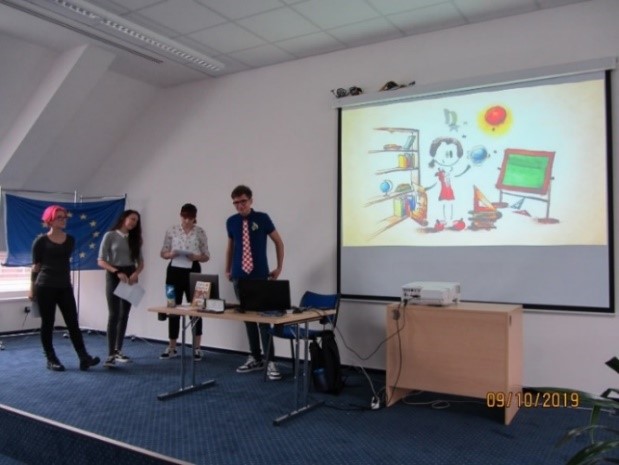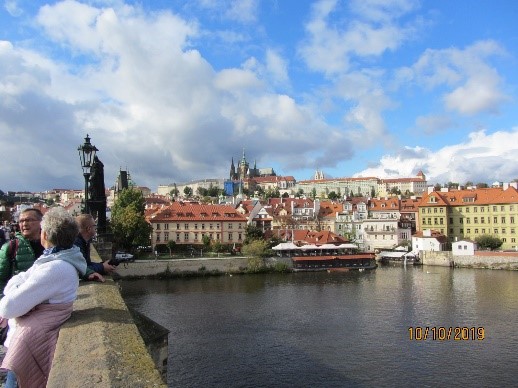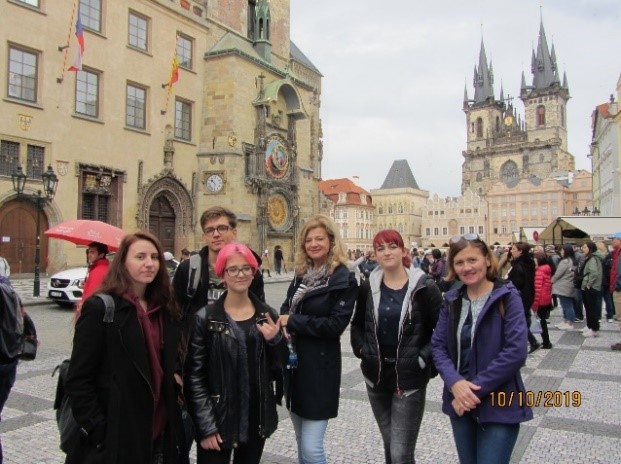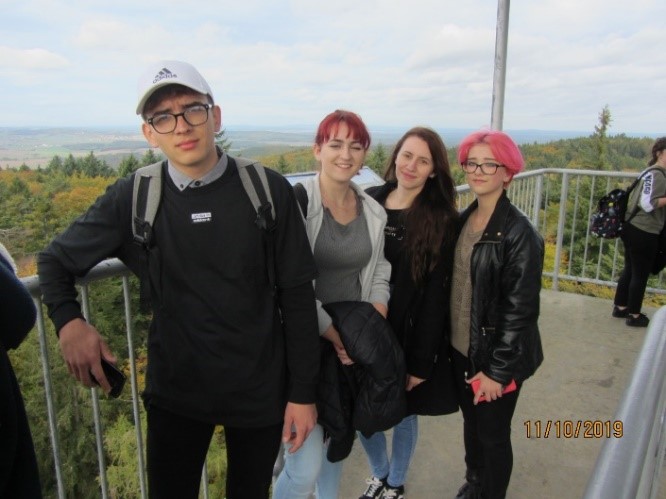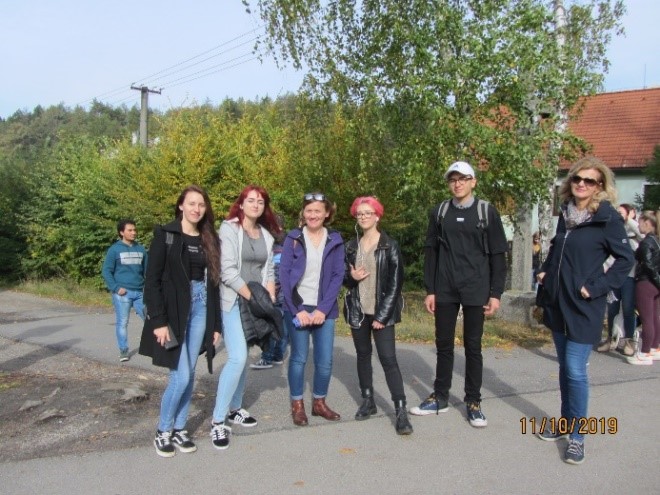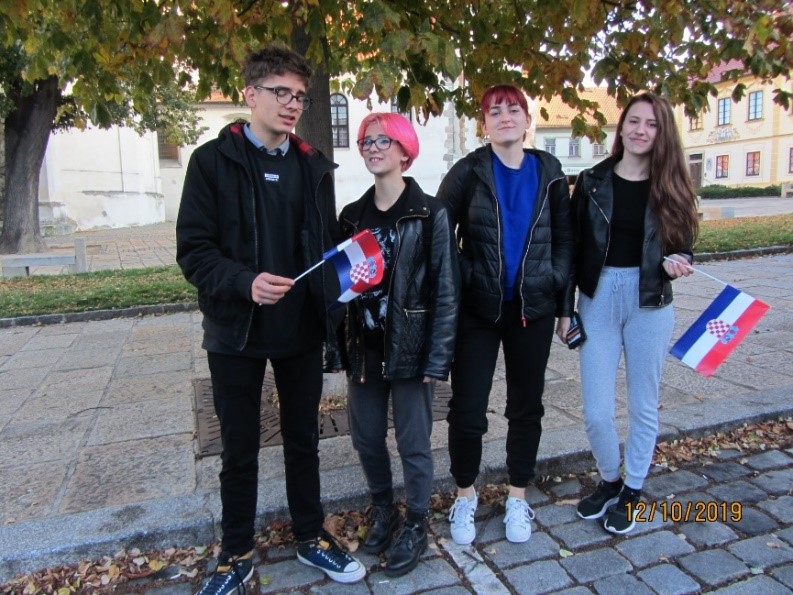

„ Our Heritage: Where the Past Meets the Future“
PROJECT ACTIVITIES – 2019
Second mobility: Narva, Estonia
April 1,2019 – Monday
Ten members of the Croatian Erasmus team, 6 students and 4 teachers arrived in Tallinn by transfer from Zagreb via Warsaw. From there they traveled to Narva by bus, the third largest Estonian city situated on the Russian border.
April 2, 2019 – Tuesday
Upon arrival at the host school, the Estonian project coordinator welcomed the gathered mobility participants from Croatia, Turkey, the Netherlands and Chechia. She welcomed them and briefly presented the planned activities. The team members took a walk around the school accompanied by an Estonian team coordinator and English teacher in order to receive information on the school structure and educational programmes. The also visited a class of lower-level students learning English as a foreign language.
This was followed by a welcome ceremony where the Estonian team coordinator and the school principal, Ljubov Fomina, adressed the participants from the partner countries. During the cultural and stage program, the gathered guests learned about the country of Estonia,its beauties and distinctive features. The students of the host school gave a dance performance dressed in folk costumes of Estonia and presented several folk dances and after that they performed a song in English

This was followed by a welcome ceremony where the Estonian team coordinator and the school principal, Ljubov Fomina, adressed the participants from the partner countries. During the cultural and stage program, the gathered guests learned about the country of Estonia,its beauties and distinctive features. The students of the host school gave a dance performance dressed in folk costumes of Estonia and presented several folk dances and after that they performed a song in English.
The Headmistress invited all attendants to join her in her office where she presented the features of her school and the guests shared experiences about the specific aspects of schooling in their countries and the expectations of visiting Narva.
During this time the students from the visiting schools as well as the host school got to know each other by participating in different games.
The afternoon program was reserved for an independent tour and exploration of Narva and its sights – Narva Castle, Alexander Cathedral, Cathedral of the Resurrection of Jesus, City Hall, University of Tart College, Swedish Lion Monument, City Forts, Art Gallery, promenade along the Narva River and the city park. The national teams were given a task to look for the city’s landmarks with the help of a city plan, to take common photographs in front of the given sights, after which the hosts forwarded the photos to the Estonian project coordinator.
April 3, 2019 – Wednesday
In the morning part of the program, members of national teams participated in the activities of two workshops. At the art workshop they presented their name, country of origin, favorite number, animal, drink and food, hobbies they work on with a color and a line – they created a puzzle with which they pinpointed fellowship of project members from different countries. At the second workshop they made a cornflower, national symbol of Estonia with scissors, needles and thread.
In the school hall, a team competition was held for students in running, pushing the ball, jumping over the rope, volleyball and volleyball with pilates ball. Teams consisted of students from different countries, which allowed them to get to know each other and connect even more.
The afternoon was scheduled for sightseeing of the castles on the banks of the Narva River, founded by the Danes in the 13th century. Guided walk through the medieval building discovered interesting facts from the history of one of the most preserved fortifications of Estonia and its Swedish, German and Russian owners. The sightseeing ended with climbing the 51-meter-tall Hermann tower from the top of which one can see a fort in a Russian town Ivangorod on other side of the Narva river bank. This was followed by participation in making bracelets in one of the rooms of the castle.

April 4, 2019 – Thursday
The day was meant for a visit to the capital city of Estonia, Tallinn, an old part of which is on the UNESCO World Heritage List. Travel guide presented the history of the city to the members of the project through the streets of Tallinn, touring the walls and towers of Toompee, the Estonian Parliament building, Alexander Nevsky Orthodox Cathedral, the oldest church Toomkirk from the 13th-century, and finally the city’s main square with a town hall. The free time was spent by strolling through the picturesque medieval streets of Tallinn followed by a visit to the Seaplane Harbor Museum (Lennusadam). Students and teachers were taking a tour of the maritime exhibits, and as they entered the Lembit submarine for a moment, they experienced what life under the sea looked like. They tried to fly the plane, they felt the change in water pressure and the gusts of wind and they also tried out naval uniforms and imagined they were sailors.

April 5 , 2019 – Friday
The students were attending physics, chemistry and maths lessons at the Narva Soldino Gümnaasium while the teachers and attendants were in the staff room discussing the tasks for the following project gathering in Pisek, Czech Republic, in October 2019.
Before national costumes were presented, young talents had been performing in front of the audience in these categories: singing, modern and classical dance, rhythmic gymnastics.
The central part of the project programme was dedicated to folklore traditions of partner countries. After the Czech Republic and the Netherlands demonstrated their folklore characteristics, the Croatian team presented their home-town Varaždin and their school.
Dividing Croatian national costumes into Pannonic, Dinaric and Adriatic, each student on the team gave a brief presentation on the typical features and characteristics of Croatian national costumes. Ms Jasna Majhen, teacher, dressed in the costume of the Međimurje region, demonstrated properly what the national costume of Međimurje, previously described in detail by the students, looks like in reality. The presentation of the Croatian team was received by loud applause.
After all the national costumes had been shown, the hosts asked the participants to join the Estonian folk dance, the choreography of which was taught by the students of the Gümnaasium.
In the afternoon the guests were invited by the hosts to support the students of the Narva Gümnaasium in an indoor rowing competition taking place at their sports centre.
The rest of the day continued in the sport spirit – all teams took part in a team bowling competition.
April 6, 2019 – Saturday
Narva-Jõesuu is a nearby town situated on the Baltic coast. It used to be a residence of St. Peterburg aristocrats and today it is a popular summer resort with a long, sandy beach which the participants of the Erasmus+ programme visited and walking along it enjoyed the springtime sun.
The attendance certificates were handed out at the farewell lunch in Narva.

April 7 , 2019 – Sunday
The participants of the exchange programme returned to Zagreb from Tallin by connecting flight via Vienna late in the evening.
THIRD MOBILITY: Pisek, Czech Republic
Day 0 – 6th October 2019
Our Erasmus group was made up of four students: Marina Florjanović, Simona Posavec, Helena Kramar and Fran Šumečki, who were accompanied by their teachers, Gordana Hunjadi and Verica Busija.
We left Varaždin at 9.00 a.m. and after a pleasant drive through Slovenia, Austria and southern part of the Czech Republic, we arrived at our destination – the town of Pisek. The hosts were waiting for their Croatian guests-students to take them to their homes where they were going to spend the following five days.
Day 1 – 7th October 2019
The members of all teams met at the host school – Obchodni akademie a jazykova škola Pisek – at 10.00 a.m. A group of the teachers also arrived at the school: Fatma and Nazik from Turkey, Daria and Natasha from Estonia, and Maud from the Netherlands. We were all received by Eva Chovancová and Alena Kopecká, both English teachers, while Ms Kopecka is also the project coordinator. The school headmaster Mr Pavel Sekyrka welcomed the present students and teachers wishing a nice stay and productive work in the project tasks. The teams exchanged the presents among themselves.
The programme was led by a few Czech students who, first, invited the participants to form four groups which were supposed to make the puzzle showing the photo of Pisek. Our students took part proactively in this task, showing team spirit and necessary skills. The second activity was to fill in the Bingo leaflets with the names of the students who can be related to certain abilities or knowledge in accordance with questions on the paper.
After this task the students were shown round the school by their hosts, and the teachers by Ms Chovancova and Kopecka. In the building there are actually two schools – agricultural on the ground floor and our host school – economic/language school – on the second and third floor, which has been recently added and consists of a large multi-purpose classroom, a small café for the students, and in the loft there is a place for students’ relaxation: bag chairs, armchairs, table football, and a big terrace. There are 240 students attending this school, most of them girls (80%) and the majority of students comes from surrounding villages. We also visited the classrooms, most of them are very bright and equipped with computers. The classes are not very big, and in each classroom there is a sofa at the back. There is no staff room for all the teachers because they have some kind of teachers’ lounge wherel teachers of related subjects gather during the breaks and in this room there is a computer for each of them. In the hall there is a hot drinks machine mainly used by students, while the teachers and administrative staff have a small and nice kitchenette only for themselves.
The school also has a big canteen where we had lunch at 12.30. After that we went sightseeing with our host teachers. Walking along the Otava river, crossing one of a few bridges and enjoying the atmosphere of many squares in the town centre, we ended up in front of the Holy Virgin Mary Church, where we climbed 210 steps reaching the top of the tower with a spectacular view of the town.
Day 2 – 8th October 2019
All the project participants left for an excursion to Česky Krumlov, a picturesque and attractive small town on the banks of the Vltava river and listed on the UNESCO Cultural Heritage site. We were shown round the Krumlov Castle by an English-speaking guide, who told us a lot of interesting details about the former owners of the Castle (the families of Rosenberg and Schwarzenberg), their way of life in the era of renaissance and baroque and we saw some impressive objects and rooms, such as golden chariot, the Eggenberg Hall and many others. The bridge connects the Castle with the old town which is full of life and tourists. After the tour of the Castle, the students had some free time to explore the town on their own.
Day 3 – 9th October 2019
At 10 a.m. the presentation programme of the project started and the Croatian team was the first to present their work on the topics given – their presentation included famous Croatian inventions, famous buildings and famous Croatian people. They successfully described, using the slides, the most important and widely known inventions and architectural works made by the Croats, as well as some famous Croats from the past.
After all teams finished their presentations, the hosts prepared a quiz named „Risk“ in which were also included the teachers.
In the afternoon the students, divided again in multi-national teams, took part in a workshop called „Traditional cuisine“, where they were required to show their food-preparing skills making the so-called opened sandwiches, which are a Czech invention.
Day 4 – 10th October 2019
All the teams and their hosts visited the capital of the Czech Republic, Prague, the cultural and economic centre of the country. The students had the opportunity to see the famous Vaclav Square, walk on the Charles Bridge, experience the atmosphere of the crowded restaurant and café terraces on Staromestske namesti and finally, visit the Prague Castle Hradčany – Church of St. Vitus, Golden Lane… They also had a lot of free time to take their own sightseeing tours, try some authentic Czech food, do the shopping or simply enjoy a nice day in this beautiful city. Historical buildings, tourist attractions, crowds of people… all these impressed the students and created unforgettable memories.
Day 5 – 11the October 2019
The project participants went for a walk through the woods near Pisek following the so-called route of painful stones, where each stone shows a moment of grief and pain in people’s lives. This installation was created by the students of the host school. After two hours we reached the radio transmitter of Jarnik, at the 606 m height, from which there was a beautiful view of the town and its surroundings. On our way back to Pisek we had a lovely outdoor grill-party at a cosy restaurant situated on the slopes of the hill.
In the afternoon the certificates were given to the participants and the next meeting was scheduled for February 2020 (from 3rd until 7th) in the Netherlands with the topics: national history and poetry.
Day 6 – 12the October 2019
At 9.00 a.m. we set out on our trip back to Varaždin, full of impressions, new experiences and new friendships. All the members of the Croatian team agreed that this mobility meeting represents a positive moment in their lives. The main goal of the project was to present differences among the countries, but, at the same time, connect different cultures and peoples, eliminate cultural prejudices and language barriers. All participants of the project, as well as their families, friends and fellow-students felt enriched with new ideas and knowledge.
